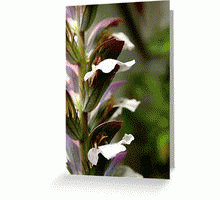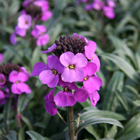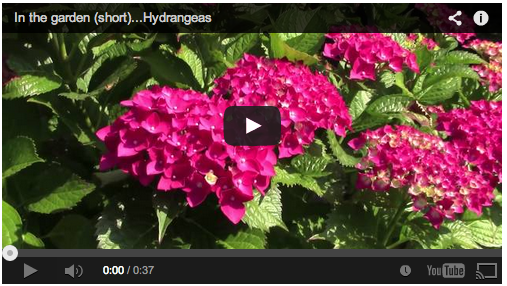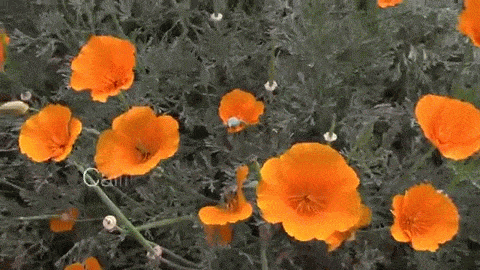Garden Alphabet: Snow Plant (Sarcodes sanguinea)
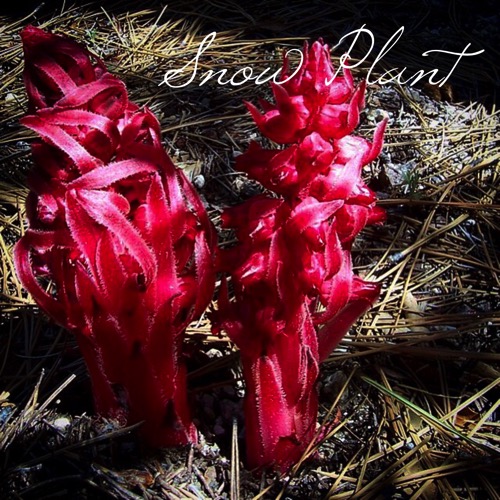
Sarcodes is a monotypic genus of a single springtime flowering plant in the heath family (Ericaceae) containing the single species Sarcodes sanguinea, commonly called the snow plant or snow flower. It is a parasitic plant that derives sustenance and nutrients from mycorrhizal fungi that attach to roots of trees. Lacking chlorophyll, it is unable to photosynthesize.[1] Ectomycorrhizal (EM) symbioses involve a mutualism between a plant root and a fungus; the plant provides fixed carbon to the fungus and in return, the fungus provides mineral nutrients, water and protection from pathogens to the plant. The snow plant takes advantage of this mutualism by tapping into the network and stealing sugars from the photosynthetic partner by way of the fungus.[2]
The plant’s aboveground tissue is its inflorescence, a raceme of bright scarlet red flowers wrapped in many straplike, pointed bracts with fringed edges, themselves bright red to orange in color.[3]
Sarcodes sanguinea is native to montane areas of the California Floristic Province, from the OregonCascade Range (as far north as the Umpqua River), through the mountains of California (though it is absent from the California Coast Ranges between the Klamath Mountains and the Transverse Ranges), and into the Sierra de San Pedro Mártir range of northern Baja California.
Its species epithet sanguinea refers to the striking red flower that emerges from the sometimes still snow-covered ground in early spring or summer; this may be as late as July in high elevations, such as those of the High Sierra Nevada and Cascades.[3] — Wikipedia
Get my photos a variety of products including tote bags, mugs, posters and more!
More information on Snow Plant (Sarcodes sanguinea):
- Snow Plant (Sarcodes sanguinea) on Wikipedia
- Snow Plant (Sarcodes sanguinea) at US Forest Service
- Snow Plant (Sarcodes sanguinea) at Wayne’s Word
* A portion of each sale from Amazon.com directly supports our blogs
** Many of these books may be available from your local library. Check it out!
Previously in Garden Alphabet:
- Acanthus
- Agapanthus (Lily of the Nile)
- Agave americana
- Amaryllis
- Apricot (Prunus armeniaca)
- Aspen
- Azalea
- Banana
- Basil
- Bird of Paradise (Strelitzia)
- Bonsai
- Bougainvillea
- Brugmansia
- Butterfly (Lepidoptera)
- California Flannelbush (Fremontodendron californicum)
- California Poppy (Eschscholzia californica)
- Calla Lily (Zantedeschia aethiopica)
- Campsis radicans
- Castor Bean (Ricinus)
- Caltapa
- Chives (Allium schoenoprasum)
- Clematis
- Camellia
- Currant (Ribes)
- Dahlia
- Datura
- Japanese Cherry (Prunus serrulata)
- Daffodil (Narcissus)
- Dietes (Fortnight Lily)
- Dudleya
- Echinacea
- Ecualyptus
- Epiphyllum
- Poinsettia (Euphorbia pulcherrima)
- Ficus benjamina
- Freesia
- Fungi
- Geranium
- Gerbera Daisy
- Grape (Vitis vinifera)
- Helianthus (sunflower)
- Hibiscus (Malvaceae)
- Hollyhock (Alcea)
- Honeybee
- Hosta
- Common Ice Plant (Mesembryanthemum crystallinum)
- Iris
- Jacaranda mimosifolia
- Joshua Tree (Yucca brevifolia)
- Kniphofia “Red Hot Poker”
- Lantana
- Lavender (Lavendula)
- Kousa Dogwood (Cornus kousa)
- Magnolia x soulangeana (Saucer Magnolia/Tulip Tree)
- Mandevilla
- Magnolia Grandiflora
- Marigold (Calendula officinalis)
- Matilija Poppy (Romneya)
- Morning Glory (Convolvulaceae)
- Nandina
- Oleander (Nerium)
- Oleander (Nerium)
- Olive
- Orange
- Orchid from the Southern California Spring Garden Show 2013
- Oriental Poppy (Papaver orientale)
- Polygonatum (Solomon’s Seal)
- Paperwhites
- Pineapple (Ananas comosus)
- Primula (Primrose)
- Queen Anne’s Lace (Daucus carota)
- Rosa ‘JFK’
- Rosa ‘Mikado’
- Rudbeckia
- Salvia
- Sempervivum
- Squirrel
- Star Jasmine (Trachelospermum jasminoides)
- Succulents
- California Sycamore (Platanus racemosa)
- Sweet Potato (Ipomoea batatas)
- Tomato
- Vinca
- Water Lily (Nymphaeaceae)
- Wisteria
- Zinnia
